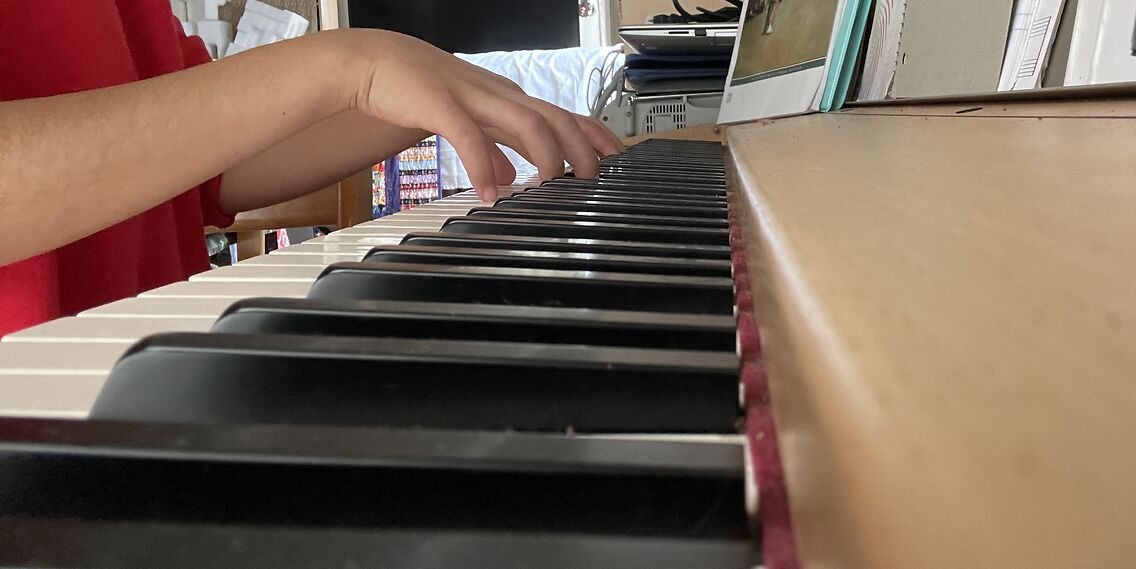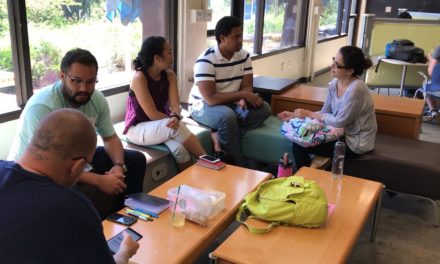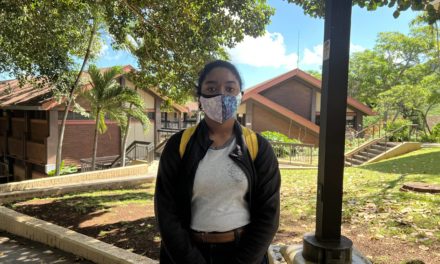Teaching music online has been a challenge for music teachers since the start of the pandemic. Many instructors are eager to start in-person classes again. (Photo by Cameron Enomoto)
By Cameron Enomoto | Staff Writer
Through the challenging two years brought about by Covid-19, many professors had to find a virtual means of teaching their students. While this may have worked well for certain subjects, music instructors have found it extremely difficult to execute.
Prior to the pandemic, in-person lessons and performances were the norms. Students were able to practice on campus and receive feedback from their instructor immediately. In doing so, students would be able to learn proper techniques and coordination between reading notes and rhythm.
“Students would rather have it explained ‘live’ so that they can ask questions at the time that the questions occur to them,” said professor Anne Lum, who teaches the piano and choir courses at KCC.
Over the platform Zoom, an online video communication site, it is much harder for teachers to evaluate and coach students. When learning piano, it is crucial for beginners to develop good hand placement and posture. However, if teachers are only able to view students from one angle, it’s hard to determine if they are playing correctly.
In addition to this, Zoom creates issues with audio and sound quality.
“Zoom tends to eat a whole stream of notes, then spit them out in a mess two seconds later,” said Lum. “Sometimes it completely eats notes so that they are not audible at all.”
This can be problematic since teachers rely heavily on student performance to be able to offer feedback. Not being able to hear properly can cause issues to be overlooked or teachers may spend additional time trying to correct something that may not have been a problem to begin with. Zoom also has a latency effect, which causes a lag between the time a student is playing and the time that other viewers can hear their notes. As a result, each student has to play by themselves instead of with a partner or an instructor.
One of the more demanding aspects of online teaching is requiring students to purchase their own instruments. Not all students are able to afford an instrument, which affects the enrollment greatly. Lum said that enrollment was at an “all-time low” for piano students at KCC.
John Mattox, the guitar and ‘ukulele instructor at KCC, agrees.
“There was definitely more enrollment prior to Covid,” he said. “I have fewer students now.”
With a smaller class size, building rapport can also be a struggle. According to Lum, this happens fairly quickly with an in-person setting, though it doesn’t always happen online.
The most challenging aspect for teachers comes with planning and recording lessons. When it comes to music, getting the right video can be a lengthy process and uploading files can take even longer.
“It takes three times as long to prep the class sites as it does to just teach the class face to face,” said Lum. “I also think that students are burned out on watching so many video tutorials and reading through written directions.”
There are currently five music performance courses being offered this semester. Two of which are piano classes, followed by voice, guitar, and ukulele. All of these courses have room to admit more students, which would help the program grow. As we continue to stay vigilant with the ongoing pandemic, teachers remain hopeful that in-person classes will be available to students again.






